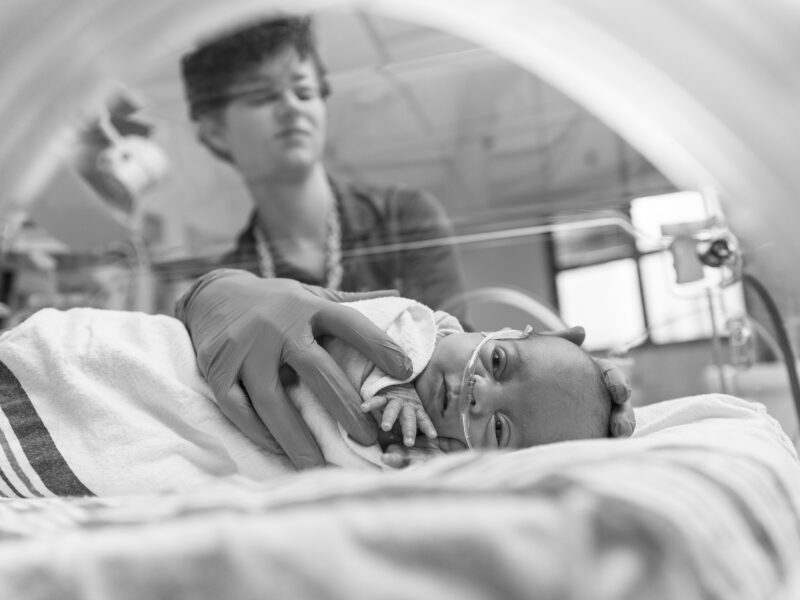Sweat Chloride Should Be the First-Line CF Test, but Often Isn’t
Sweat Chloride Should Be the First-Line CF Test, but Often Isn’t https://pediatricsnationwide.org/wp-content/themes/corpus/images/empty/thumbnail.jpg 150 150 Jeb Phillips Jeb Phillips https://pediatricsnationwide.org/wp-content/uploads/2021/03/Jeb-Phillips.jpg- June 27, 2017
- Jeb Phillips
A study finds that CFTR mutation analysis is being ordered before (or without) sweat chloride in some cases, potentially leading to missed diagnoses, increased patient anxiety and unnecessary costs.
The Cystic Fibrosis Foundation is clear in its diagnostic guidelines: sweat chloride needs to be the first test ordered after a positive newborn screening for cystic fibrosis (CF), or with clinical suspicion of CF or with concern about family history. Sweat chloride testing frequently results in a definitive diagnosis and it is relatively inexpensive.
But a recent study conducted by physician-researchers at Nationwide Children’s Hospital found that cystic fibrosis transmembrane conductance regulator (CFTR) mutation analysis – which should be used only after an indeterminate sweat test – is sometimes ordered as the first test. In fact, it is sometimes ordered as the only test.
CFTR mutation analysis can be diagnostic when two CF-causing mutations are identified. Not all CF patients have those two mutations, however. A clinician who excludes a diagnosis of CF based only on the analysis could potentially miss cases that would have been identified with a sweat chloride test.
“Our results were very surprising to me. I was not expecting so much variation from the Cystic Fibrosis Foundation guidelines,” says Shahid Sheikh, MD, a member of the Section of Pulmonary Medicine, physician in the Cystic Fibrosis Center at Nationwide Children’s and senior author of the publication. “This suggests that some clinicians ordering these genetic tests do not fully understand the guidelines for CF diagnosis.”
The study, published in the World Journal of Pediatrics, looked at 315 patients who underwent CFTR mutation analysis at Nationwide Children’s between 2006 and 2013. A total of 83 patients (26.4 percent) had that analysis without any corresponding sweat chloride testing. Ten patients had a sweat chloride test indicating CF but no mutations, and ten others had a positive chloride test and only one mutation. Together, those 20 patients with CF diagnoses could have been missed if a sweat chloride test had not been performed.
The authors also identified patients who had the mutational analysis but would not have needed it for diagnosis if sweat chloride testing had been performed first. Sweat chloride testing costs approximately $250, while the genetic testing can cost $3,000 or more. An estimated $500,000 was spent on unnecessary mutation analysis.
Beyond that, patients and parents can experience anxiety at the extra testing, the wait times associated with it and the occasional difficulty in interpreting the results, says Dr. Sheikh, who is also an associate professor of Clinical Pediatrics at The Ohio State University College of Medicine.
Any clinician at Nationwide Children’s, including primary care physicians, can order the mutation analysis. Dr. Sheikh says that while pulmonologists tended to follow the Cystic Fibrosis Foundation protocol, some others did not. Many of the patients comprising the study population were not followed by the Section of Pulmonary Medicine at the time of testing, he said.
The hospital now has institutional checkpoints to ensure that the analysis is being ordered appropriately.
“Those checkpoints make a difference, but we still recommend that if there is any clinical reason to be suspicious of CF, a physician at any institution can always check with a pulmonologist before testing,” says Dr. Sheikh. “Even if it is not a referral or official consult, we want to make sure best practices are followed.”
References:
Ratkiewicz M, Pastore M, McCoy KS, Thompson R, Hayes D Jr, Sheikh SI. Role of CFTR mutation analysis in the diagnostic algorithm for cystic fibrosis. World Journal of Pediatrics. 2017 Apr;13(2):129-135.
About the author
Jeb is the Managing Editor, Executive Communications, in the Department of Marketing and Public Relations at Nationwide Children's Hospital. He contributes feature stories and research news to PediatricsOnline, the hospital’s electronic newsletter for physicians and other health care providers, and to Pediatrics Nationwide. He has served as a communications specialist at the Center for Injury Research and Policy at The Research Institute and came to Nationwide Children’s after 14-year career as daily newspaper reporter, most recently at The Columbus Dispatch.
-
Jeb Phillipshttps://pediatricsnationwide.org/author/jeb-phillips/October 13, 2015
-
Jeb Phillipshttps://pediatricsnationwide.org/author/jeb-phillips/
-
Jeb Phillipshttps://pediatricsnationwide.org/author/jeb-phillips/November 24, 2015
-
Jeb Phillipshttps://pediatricsnationwide.org/author/jeb-phillips/January 19, 2016
- Post Tags:
- Cystic Fibrosis
- Pulmonary Medicine
- Posted In:
- In Brief







